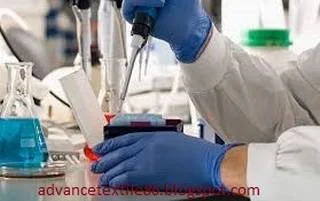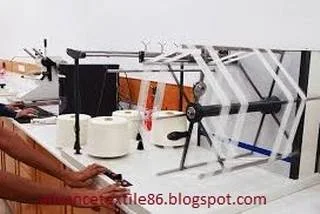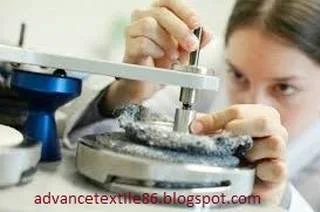Introduction
Fabric testing
plays an important role in determining product quality, ensuring regulatory
compliance, and evaluating the effectiveness of textile materials. It provides
information about the physical or structural features and functional
characteristics of the fabric.
Fabric Testing
Usually, garments are produced from fabric. Fabric Knitted or woven or others, solid-colored dyed, printed, check, or stripe fabric can be finished. Before making garments from those fabrics, especially in large quantities, it should be kept in mind that the fabric may be rejected by the buyers due to some quality problems of the fabric although the fabric can be new. To avoid this kind of problem, the fabrics have to be tested to identify their true quality before making the fabric and this is called fabric testing.
Purpose of fabric testing
i. Check the fabric according to the fabric specification.
ii. Notice the
impact of changes in structural details.
iii. Note the
effects of physical and chemical treatments, weather or exposure to laundering
or washing, etc.
iv. Get some
identification of potential performance in use.
v. Causes of
failure and customers to investigate complaints.
vi. Help design
fabric for a specific purpose.
vii. To study
fiber, yarn, and fabric interaction properties.
viii. For
research and development purposes
ix. For new
product development.
Types of Fabric Testing in Textile
i. Fastness to
rubbing/crocking test.
ii. Visual
inspection & grading.
iii. Bursting
strength test.
iv. Abrasion
resistance test.
v. Braking
force & elongation test.
vi. Bubbling
test for wool woven fabric.
vii.
Lightfastness test for dyed fabric.
viii.
Perspiration test for dyed fabric.
ix. Crimp% test
of fabric.
x. Cross dyeing
fastness test.
xi. Curling
test in wool woven fabric.
xii. pH test.
xiii. Drape
coefficient test.
xiv. Felting
shrinkage test.
xv. Width test
of fabric.
xvi. Oil stain
resistance test.
xvii. Pilling
test by ICI/Martindale method.
xviii. Pleating
angle of fabric.
xix. Washing
& ironing shrinkage test.
xx. Spin
finish% test of fabric.
xxi. Tensile
strength test.
xxii. Thread
density test.
xxiii. The
resistance of fabric-Shower test
xxiv. The
resistance of fabric-Water drop test
xxv. The
resistance of the fabric-Abrasion test
xxvi. Wt/sq
meter test.
xxvii. Colorfastness
test.
xxviii.
Colorfastness to different solvent test
xxix.
Colorfastness to water test.
xxx. Crease
recovery test.
xxxi. Dry
cleaning & steaming shrinkage test.
xxxii.
Thickness test of fabric.
xxxiii. Seam
slippage test.
xxxiv. Stretch
Properties test of woven fabric.
xxxv. Dry
cleaning fastness test.
xxxvi. Fastness
to Hot-press test.
xxxvii. Hygral
expansion test.
xxxviii.
Flammability test.
xxxix. GB Test
for China.
xxxx.
Formaldehyde test.
Xxxxi.
Antibacterial and antimicrobial test.
Xxxxii. Banned
azo dyes and colorants test, etc.
Fabric testing different standards
i.
International Standards: ISO, IEC, GATT
ii. American
Association of Dyeing and Chemical Authors: AATCC
iii. Chinese
National Standard: GB/FZ
iv. Japanese
Industrial Standards: JIS
v. Regional
standards: CEN, CENEL, ASAC, PASC, ARSO.
vi. EU
Standards: EN
vii. American
National Standard: ASTM
viii.
Australian National Standards: AS
ix. Korean
Industrial Standard: KS
x. French
Standards: NF
xi. German
Standard: DIN
xii. British
National Standards: BS












0 Comments